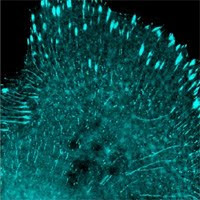In last week’s blog we discussed generation of induced pluripotent stem cells (iPSCs) with miRNAs expressed from lentivirus. To take it a step further, synthetic, mature miRNAs can be used to avoid the use of viral vectors. Sure enough, Miyoshi et al. published a paper online a few days ago showing that by transfecting 6 miRNAs at 48 hour intervals, they were able to create iPSCs from mouse and human somatic cells. The efficiency is comparable to retrovirus-mediated OSKM factor over-expression (Yoshida et al.), and therefore lower than lentivirus-mediated miR302/369 expression (Anokye-Danso et al.).
In the study of using mature miRNA for obtaining iPSCs, the researchers transfected miRNAs mir200c, mir302s and mir-369 into tissue cultured cells and achieved reprogramming results. Interestingly, only mir302s are common between this study and that with lentivirus-mediated miRNAs by Anokye-Danso et al. There is no current explanation as to why mir-367, which was shown to be required by Anokye-Danso et al., did not seem to be needed in the mature miRNA transfection experiments. Perhaps a level of redundancy among miRNAs, combined with their broad target range and relatively low specificity, allow some of the miRNAs to be interchangeable when used for reprogramming.
Finally, neither of these two recent miRNA-iPSCs works was the first to demonstrate that miRNAs can initiate or facilitate reprogramming. As early as 2008, Lin et al. showed that mir302s could induce pluripotency in a dose-dependent manner by using tet-induced lentivirus expression. They further illustrated that the underlying mechanism is likely through mir302s’ regulation of epigenetic regulators AOFs and other similar factors.
Promotion of the week: Promotion of the week: 10% off on all fluorescent proteins. To redeem, email oligo@allelebiotech.com along with PROMO code: JELLYFISH. See weekly promotions on Facebook.




No comments:
Post a Comment